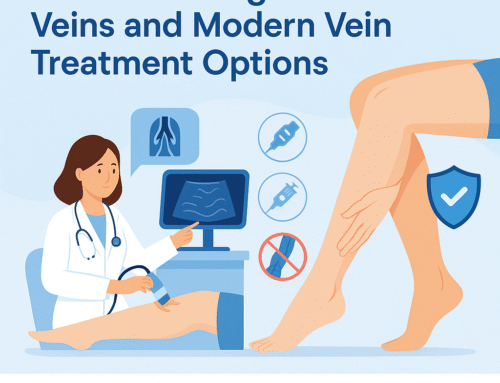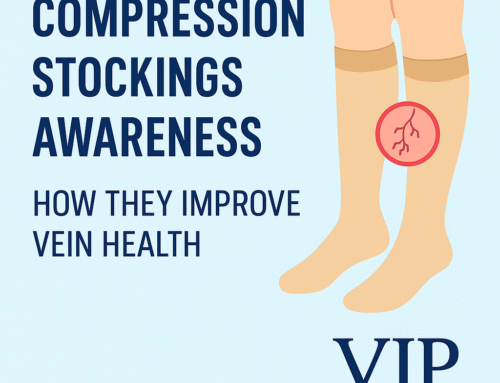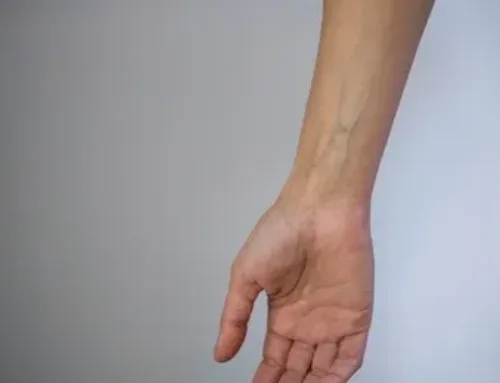Why is One Calf Bigger Than The Other? Understanding Swelling in the Feet and Legs: Causes, Lymphedema, and Treatment Options
Swelling of the feet and legs is a fairly regular occurrence and something many people experience at some point in their lives. While it may seem harmless, persistent or unexplained swelling could be a sign of an underlying medical condition that deserves attention.
Many individuals may notice that one calf appears larger than the other, raising concerns about potential health issues.
One of the most common reasons for swelling is fluid retention, medically known as edema. This occurs when excess fluid builds up in the tissues, often in the lower extremities, due to gravity and circulation issues. Sometimes, swelling develops after sitting or standing for long periods, while in other cases, it may be linked to more serious health concerns.
In particular, swelling in one calf can indicate issues such as fluid retention or vascular problems.
Among the many causes of swelling, lymphedema stands out as a chronic condition that requires long-term management. Understanding the differences between everyday swelling and lymphedema can help you take proactive steps for your health.
When dealing with lymphedema, it is common to observe a noticeable difference in calf sizes.
Why Does Swelling Occur?
Swelling in the legs and feet happens when fluid accumulates in the soft tissues of the lower body. Some common reasons include:
-
Poor circulation – Blood may pool in the legs due to weak veins or damaged valves.
-
Sitting or standing too long – Prolonged inactivity reduces circulation, allowing fluid to collect.
-
High salt intake – Sodium causes the body to retain water.
-
Pregnancy – Hormonal changes and extra fluid increase the risk of swelling.
-
Certain medications – Blood pressure medications, steroids, and some diabetes drugs can cause swelling.
-
Heart, kidney, or liver conditions – These can lead to chronic fluid retention.
When the cause is temporary—such as a long flight or a salty meal—swelling usually resolves on its own. However, persistent or worsening swelling should not be ignored.
What Is Lymphedema?
Lymphedema is a condition that results from a blockage or impairment of the lymphatic system, a vital network that helps maintain fluid balance and fights infections. When lymph fluid cannot drain properly, it builds up and causes swelling, typically in the arms or legs.
Unlike temporary swelling, lymphedema is a chronic condition. While it may start mild, it can progress over time if left untreated, leading to complications such as skin thickening, infections, and disfigurement.
Causes of Lymphedema
Patients with lymphedema often experience swelling in one calf, making it essential to understand the causes.
Lymphedema can be primary (developing on its own) or secondary (caused by another condition or event). Common causes include:
-
Cancer treatment – Removal or radiation of lymph nodes can damage the lymphatic system.
-
Infections – Repeated infections can scar lymphatic vessels and block drainage.
-
Trauma or injury – Physical injury to lymph nodes or vessels can cause swelling.
-
Burns or surgery – These can damage lymph vessels, leading to fluid buildup.
-
Obesity – Excess body fat increases pressure on lymphatic and venous systems.
-
Genetic abnormalities – Rarely, some people are born with underdeveloped lymphatic systems.
Symptoms of Lymphedema
The hallmark symptom of lymphedema is swelling in one or both limbs. Unlike ordinary edema, it does not always go away with rest. Additional symptoms include:
-
A feeling of heaviness or tightness in the affected area
One symptom of lymphedema could be that one calf becomes significantly larger than the other.
-
Noticeable size difference between limbs (e.g., one calf larger than the other)
For many people, this can manifest as one calf that feels heavier or looks noticeably larger.
-
Restricted mobility due to swelling and stiffness
-
Recurring infections in the affected limb
-
Skin changes, such as hardening, thickening, or developing a leathery texture (Lipodermatosclerosis)
-
Discomfort or aching pain in the affected limb
Over time, untreated lymphedema can become progressively worse, leading to serious complications.
Stages of Lymphedema
Because lymphedema is chronic, it develops in stages:
-
Latency Stage
-
No visible swelling yet
-
Lymphatic system is already under stress
-
Early intervention here can prevent progression
-
-
Reversible Lymphedema
Individuals should pay attention if their calf appears swollen, as this could indicate lymphedema.
-
Noticeable swelling begins
-
Can usually be controlled and reversed with proper treatment
-
Skin remains soft and pliable
-
-
Spontaneous Irreversible Lymphedema
-
Skin becomes thickened and hardened (fibrosis)
-
Swelling is persistent and more difficult to manage
-
At this stage, damage to lymph nodes cannot be reversed
-
-
Lymphostatic Elephantiasis
-
Severe, disfiguring swelling
-
Significant skin thickening and scarring
-
High risk of infections and mobility limitations
-
Why Prompt Treatment Matters
Delaying treatment for lymphedema can lead to complications such as:
Swelling of one calf can eventually lead to chronic lymphedema if not addressed.
-
Skin infections (cellulitis or lymphangitis)
-
Permanent skin changes (thickening, hardening, discoloration)
-
Decreased mobility and difficulty with daily activities
-
Emotional distress due to disfigurement and discomfort
Early diagnosis and management can help keep symptoms under control and prevent progression.
Treatment Options for Lymphedema
Fortunately, there are several effective treatments for managing lymphedema and reducing swelling.
Effective management of symptoms may include strategies specifically targeting swollen calves.
Conservative (Non-Surgical) Treatments
-
Compression Therapy
Wearing compression socks or wraps helps prevent fluid from pooling in the legs. -
Manual Lymphatic Drainage (MLD)
A specialized form of massage that encourages lymph fluid movement. -
Exercise & Movement Therapy
Gentle, controlled exercises improve circulation and lymphatic drainage. -
Low-Level Laser Therapy
Used to stimulate lymph vessels and reduce swelling. -
Skin Care
Keeping the skin clean and moisturized to prevent infections.
Advanced Medical Treatments
If conservative measures are not enough, minimally invasive options may be considered:
-
Radiofrequency Ablation
Uses heat to close damaged veins and improve circulation. -
Ambulatory Phlebectomy
Small incisions are used to remove damaged veins that contribute to swelling. -
Microsurgery (in severe cases)
May involve lymph node transfer or lymphaticovenous anastomosis to restore drainage.
Surgery is generally considered a last resort and reserved for severe cases.
Living with Lymphedema
While lymphedema is chronic, many patients lead full, active lives with proper management. Tips include:
-
Avoid prolonged sitting or standing – Move every 30 minutes to encourage circulation.
Keeping an eye on changes in one calf can be vital for early intervention.
-
Elevate your legs when resting to reduce fluid buildup.
-
Maintain a healthy weight to reduce pressure on your veins and lymphatic system.
-
Stay active with low-impact exercises like walking, swimming, or yoga.
-
Wear compression garments as prescribed to control swelling.
-
Monitor your skin closely for cuts, scrapes, or infections.
-
Work with a lymphedema therapist for ongoing guidance and treatment adjustments.
A therapist can help monitor calf sizes and recommend appropriate treatments.
When to See a Doctor
Seek medical attention immediately if you experience:
-
Sudden or severe swelling in one leg (could signal a blood clot)
-
Pain, redness, or warmth in the swollen area
-
Fever or signs of infection
-
Rapidly worsening swelling without clear cause
Final Thoughts
Swelling of the feet and legs is common, with noticeable changes in one calf that should never be ignored.
At VIP, our specialists are dedicated to helping patients manage swelling, improve circulation, and regain comfort and confidence. Whether through conservative therapy or advanced vein treatments, our goal is to help you get back to living a healthy, active life.
Our specialists can assist with the management of swollen calves and related conditions.
If you or someone you know is experiencing leg swelling or lymphedema symptoms, don’t wait—schedule a consultation with our team today.
Don’t hesitate to reach out if you notice changes in your calf size or other symptoms.






Leave A Comment